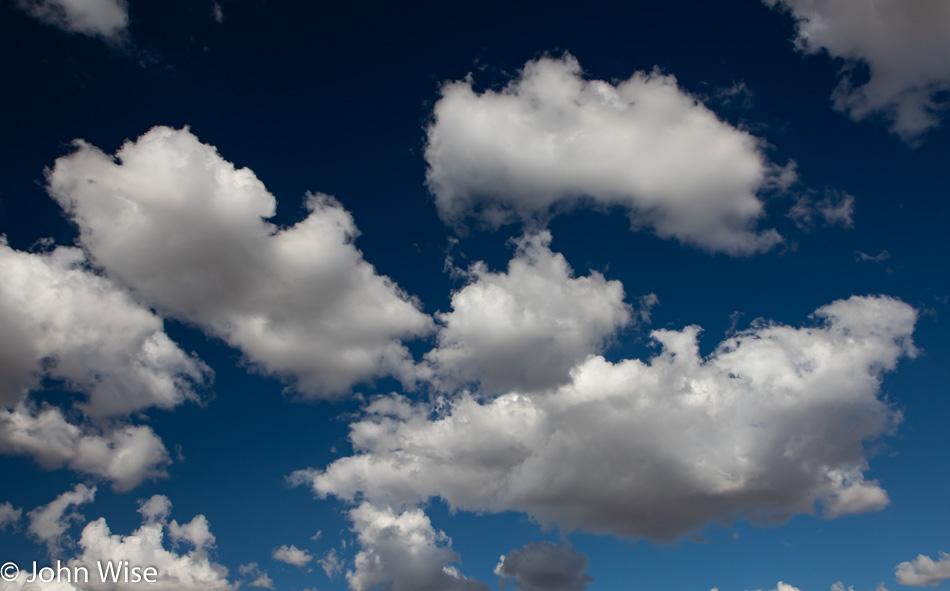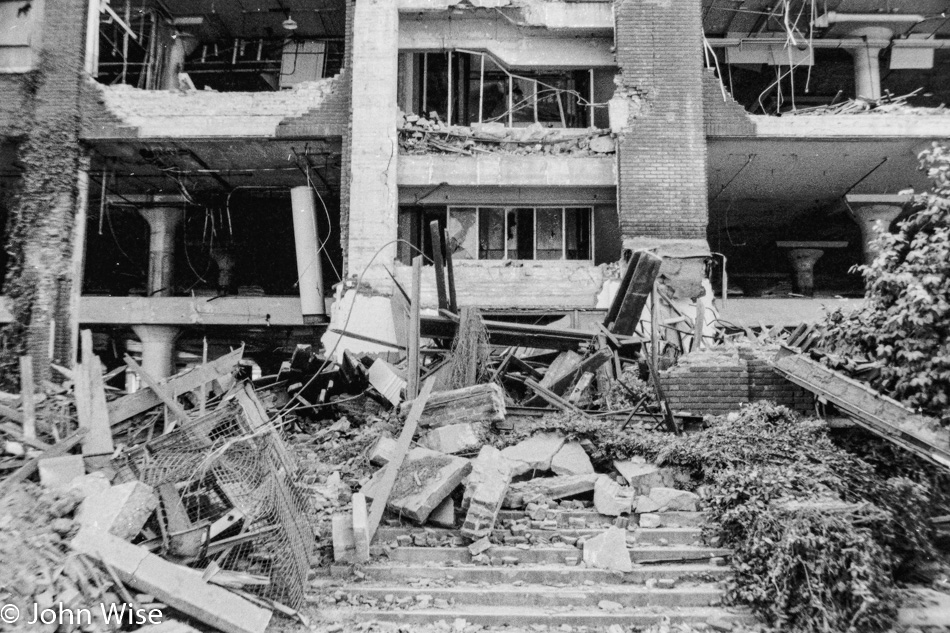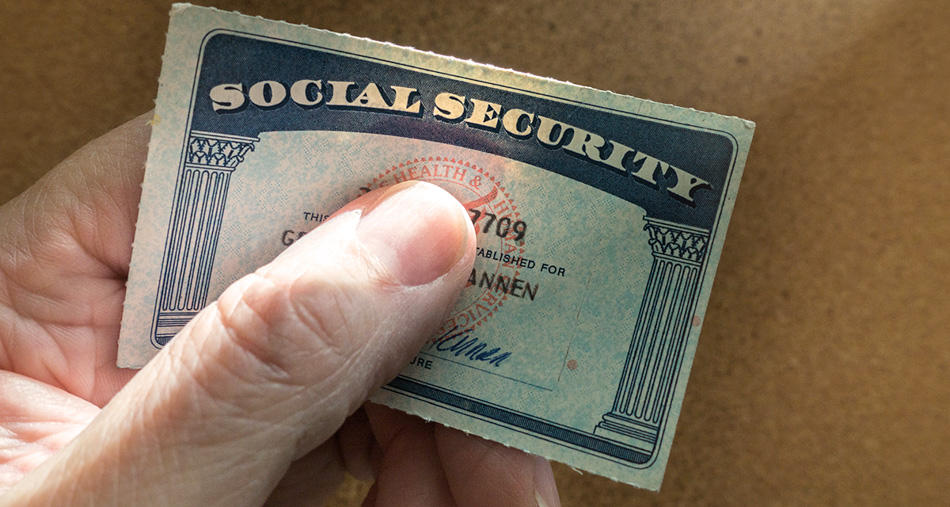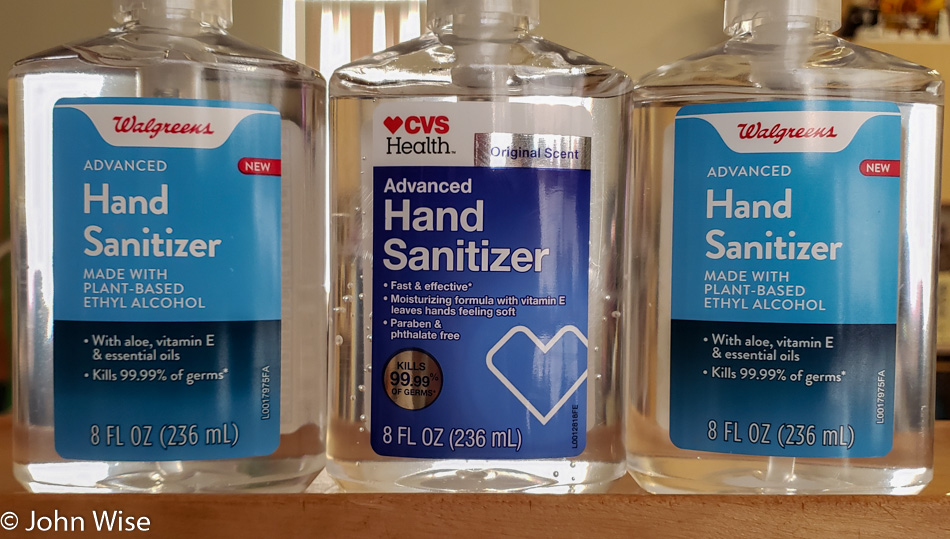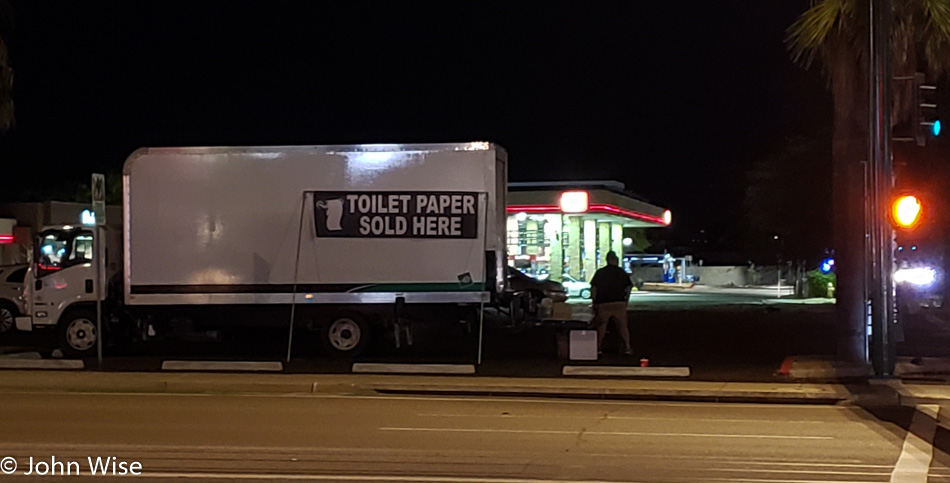
This is a bumpy process because we keep finding reasons to go out. I’m not complaining as I realize that those who moved from normal to lockdown in a night must see some incredible disruption when they find those simple things they need have all of a sudden moved beyond reach. This morning, Caroline ran into an issue with her company notebook that insisted on performing an update, rendering the computer unable to connect to her office. Her work analyzing medical billing claims for fraud comes with strict HIPAA restrictions and a ton of security; not being able to log in means not being able to work. Off we went to drop her at the office while my business partner and I decided to use the opportunity to get coffee at a local shop that, up until a week ago, had no parking and no seating available; it was so busy. Today, we sat outside while gloved baristas, after wiping down touch surfaces between orders and even changing gloves between customers, were obviously trying to do the right thing to alleviate anybody’s worry about the virus, as much as that’s possible in these circumstances and the place hardly had 15 customers.
Getting home, I went for something from the freezer and saw that some things were sweating as though the freezer was malfunctioning; definitely not the right time for it to bail out on us. I turned it up and vacuumed everything from the underside that I could get to and from the rear, including the fan and compressor. My fingers are crossed. My worry stems from the situation that things seem very fluid where we live as management is sending out near-daily missives about using facilities, packages that won’t be accepted at the front office, and limits to when maintenance will enter an apartment, meaning the issue must be an emergency.
The news of the day feels heavy and grim. The larger pattern portends a great struggle for society to maintain its bearings when so many people are handicapped by anger issues and disadvantages after America’s 40-year experiment of cultivating mediocrity. The stress that surrounds many of the issues we are facing is being exacerbated by poor decisions from the top of our government, or so it seems to me. On the one hand, by taking a glacial approach to shutting down society, the fires of immediate panic may be beaten back, but the ambiguity of how the individual without savings and job security will fare is causing empathy within me and raises my anxiety similar to when I see someone on the precipice of a great height, which triggers my vertigo.
Dishes, lots of dishes all of a sudden, as we take all of our meals at home. For dessert tonight, I’m feasting on the incredible cool news about this Facebook group that already has 6,000 members sharing open-source designs for making ventilators, respirators, and equipment that can be fabricated in emergency conditions on 3D printers. America has a serious shortage of those life-saving devices, and this effort outside of the insurance and medical industry is one of the first seriously amazing bits of great news I’ve seen in a week.
There was other good news as I read about the four volunteers in Seattle who received an experimental vaccine for COVID-19. Brave people.
Meanwhile, across the street from where we live, a guy has set up shop selling toilet paper from the back of a truck. This was today, during which I also covered 18,000 steps or 8.35 miles (13.5km) and 116 minutes of activity.
